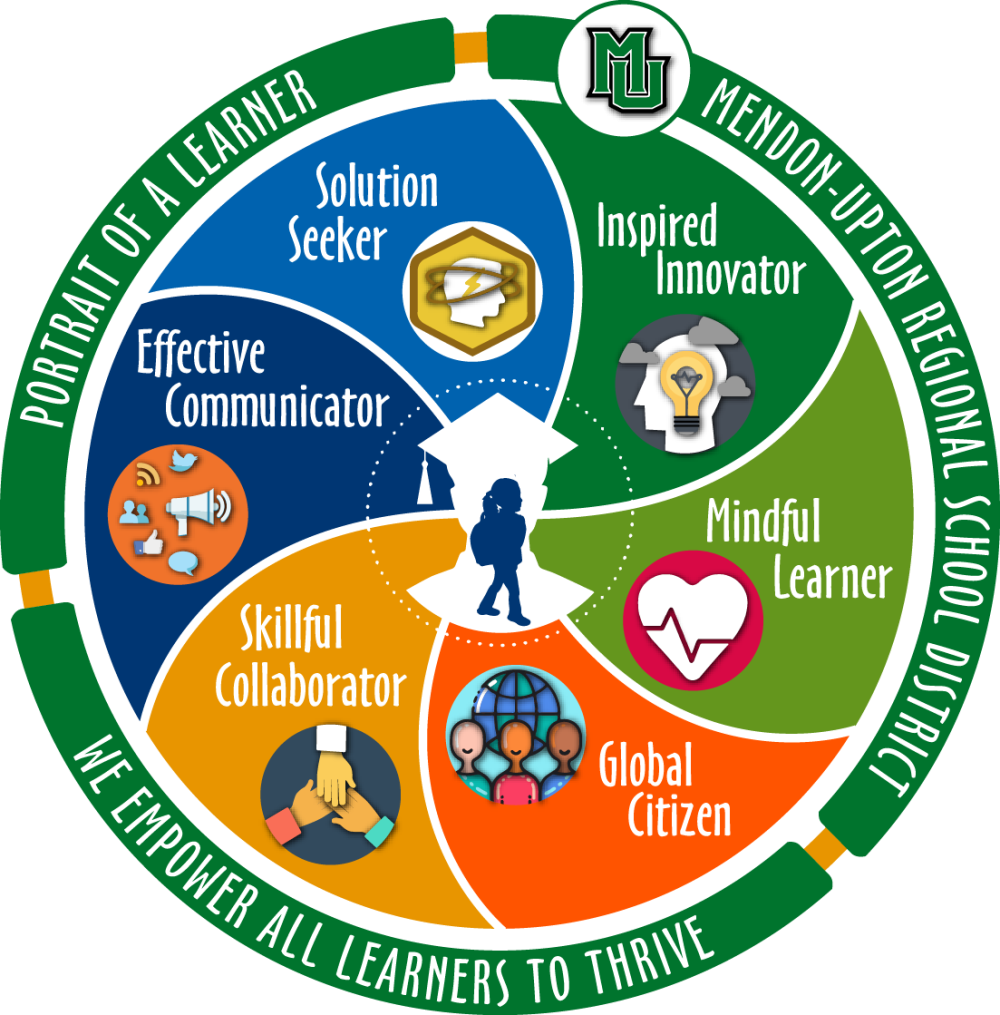Portrait of a Learner: A Catalyst for Meaningful Change
Schools, districts and state education departments are looking to articulate the traits and competencies their communities value and believe students need to succeed in the postsecondary world. The Portrait of a Learner (some use Portrait of a Graduate to capture the competencies students embody by the end of their high school journey) is a stakeholder-driven process that culminates in a clear reflection of its community and its aspirations, and is a powerful catalyst for meaningful change. The Portrait of a Learner encompasses the student from when they enter school to when they graduate, and considers what dispositions and traits to scaffold on the path to graduation. Moving from the traditional checklist of graduation requirements, developing a Portrait asks school stakeholders to consider the whole person who is experiencing and graduating from our schools and suggests that the traits are transferable to other learning situations and grow over time with intentional learning experiences and feedback.
We, at GOA, see schools engage in the process of developing a portrait of a graduate for various reasons. The initial impetus for many schools is the desire for shared expectations about the competencies a graduate of Jane Doe School will have mastered, not just what courses they've taken or credits they've earned.
While some schools and districts are attracted to the sense that the Portrait considers “the whole child”- what we hope for our students, others want to clearly differentiate their school for families by articulating a set of 4-8 traits and competencies that they value and students are assured to develop, and others are looking for that set of traits and attributes to strategically guide their work- how they teach students and assess learning. These are not mutually exclusive; most strategic leaders see the opportunity to achieve all of these objectives and more by engaging in the Portrait of a Learner process.
Many leaders are drawn to the process of developing the Portrait, which includes more than the school or academic community. It involves families, students, and local community members- those invested in the local system. The Portrait is strategic, aspirational and personal, and broadens who is included as stakeholder. The process of developing a portrait can cause a school community to coalesce around the competencies and dispositions that they value! Developing a Portrait is an opportunity to lead and engage in an enterprise that is not ruled from afar- at the state-level, or ad hoc- a reaction to the specific student. The process and the Portrait galvanize a community around shared priorities and a shared sense of purpose that all stakeholders play a role in.
Portraits share a few key elements:
They are public.
They are memorable.
They blend the representative and the aspirational.
They are actionable.
Their content is transdisciplinary, meaning the traits apply to all learning.
Stakeholders involved in the process consider traits and competencies that are both representative and aspirations of the community:
What are the hopes, dreams, and aspirations that our community has for its students?
What are the skills and mindsets our children need for success in this rapidly changing, complex world?
What traits and competencies do families and the local community value?

Mendon-Upton Portrait of a Learner
What districts and schools want out of this process could be understood through the lens of the market and the mission. In order to survive, schools need to welcome students who want to learn within their doors. Students and their families should be able to see the value in the education they will receive. A Portrait of a Graduate allows schools to articulate their value proposition. This market lens may be more superficial than the mission lens unless it truly telegraphs what the school has or is committed to offer.
Some schools pursue the Portrait as a way to sharpen their mission and how they go about meeting it. That can include adjusting:
the focus of their curriculum and pedagogy,
how they assess for learning,
how they structure the day and time,
who they partner with,
what they communicate and celebrate, and
facility and capital plans.
Using the Portrait to refine and commit to a school or district’s mission may entail deeper and more systemic change over time. The process is a public one, includes many stakeholders, and entails values so it is important to consider at the outset what the school or district is looking to accomplish as a result of the process.
If you, your school, or district has used the Portrait of a Learner to communicate what you offer to the community and would like to share what you learned along the way, we’d be delighted to feature your experiences in an upcoming post. Contact us at hello@globalonlineacademy.org.
For more, see:
GOA serves students, teachers, and leaders and is comprised of member schools from around the world, including independent, international, charter, and public schools. Learn more about Becoming a Member. Our professional learning opportunities are open to any educator or school team. Follow us on LinkedIn and Twitter. To stay up to date on GOA learning opportunities, sign up for our newsletter.



